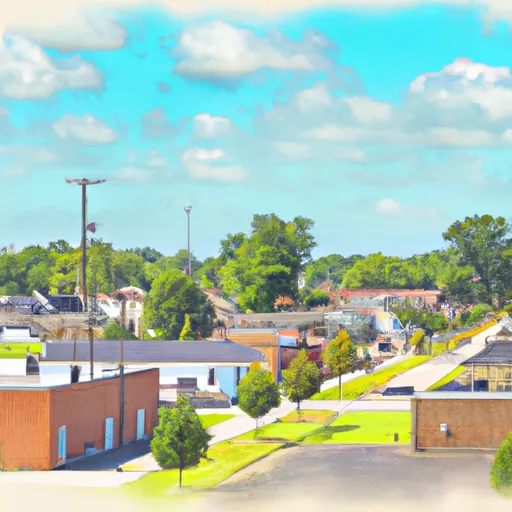-
 Snoflo Premium
Snoflo Premium
Get unlimited access to all our content
With no Ad interruptions! - Start Your Free Trial Login with existing account
Yoder
Eden Index
Climate
8.0
•
Recreation
2.5
•
Community
•
Safeguard
4.1/10

Yoder, Indiana is a small, unincorporated community located in Allen County. It experiences a humid continental climate, characterized by hot summers and cold winters. Summers are typically warm and humid with average temperatures ranging from the mid-70s to mid-80s Fahrenheit. Winters are cold, with temperatures averaging in the low 30s, and occasional snowfall.
In terms of hydrology constituents, Yoder is situated near the St. Joseph River, which flows through the region. This waterway provides opportunities for fishing and boating enthusiasts to enjoy outdoor activities. The river is known for its diverse aquatic life, including popular game fish such as smallmouth bass, walleye, and catfish.
Yoder also offers various outdoor recreation opportunities for nature lovers. The area is surrounded by picturesque countryside, making it a perfect destination for hiking, camping, and birdwatching. There are several parks and nature preserves nearby, including Fox Island County Park, where visitors can explore nature trails, picnic areas, and enjoy wildlife observation.
Overall, Yoder provides a serene and natural environment for outdoor enthusiasts, with its pleasant climate, proximity to the St. Joseph River, and the abundance of recreational opportunities available in the surrounding area.
What is the Eden Index?
The Snoflo Eden Index serves as a comprehensive rating system for regions, evaluating their desirability through a holistic assessment of climate health, outdoor recreation opportunities, and natural disaster risk, acknowledging the profound impact of these factors on livability and well-being.
Climate Health Indicator (CHI): 8.0
Yoder receives approximately
961mm of rain per year,
with humidity levels near 82%
and air temperatures averaging around
10°C.
Yoder has a plant hardyness factor of
6, meaning
plants and agriculture in this region thrive during a short period during spring and early summer. Most
plants will die off during the colder winter months.
By considering the ideal temperature range, reliable water supplies, clean air, and stable seasonal rain or snowpacks, the Climate Health Indicator (CHI) underscores the significance of a healthy climate as the foundation for quality living.
A healthy climate is paramount for ensuring a high quality of life and livability in a region, fostering both physical well-being and environmental harmony. This can be characterized by ideal temperatures, reliable access to water supplies, clean air, and consistent seasonal rain or snowpacks.
Weather Forecast
Streamflow Conditions
Wabash
Area Rivers
Wabash
Snowpack Depths
Wabash
Reservoir Storage Capacity
Wabash
Groundwater Levels
Recreational Opportunity Index (ROI): 2.5
The Recreational Opportunity Index (ROI) recognizes the value of outdoor recreational options, such as parks, hiking trails, camping sites, and fishing spots, while acknowledging that climate plays a pivotal role in ensuring the comfort and consistency of these experiences.
Access to outdoor recreational opportunities, encompassing activities such as parks, hiking, camping, and fishing, is crucial for overall well-being, and the climate plays a pivotal role in enabling and enhancing these experiences, ensuring that individuals can engage in nature-based activities comfortably and consistently.
Camping Areas
| Campground | Campsites | Reservations | Toilets | Showers | Elevation |
|---|---|---|---|---|---|
| Franklin County Park | None | 662 ft | |||
| Ouabache State Park | 125 | 822 ft | |||
| Versailles State Park | 225 | 965 ft | |||
| Lake Jericho Recreation Area | 62 | 814 ft | |||
| Paul Ogle Riverfront Park | None | 451 ft | |||
| Clifty Falls State Park | 165 | 843 ft | |||
| Madison City Park | 35 | 450 ft | |||
| Johnny Appleseed Park | 40 | 759 ft | |||
| General Butler State Park | 110 | 490 ft | |||
| Kil-So-Quah - J. Edward Roush Lake | 90 | 807 ft |
Nearby Ski Areas
Catastrophe Safeguard Index (CSI):
The Catastrophe Safeguard Index (CSI) recognizes that natural disaster risk, encompassing floods, fires, hurricanes, and tornadoes, can drastically affect safety and the overall appeal of an area.
The level of natural disaster risk in a region significantly affects safety and the overall livability, with climate change amplifying these risks by potentially increasing the frequency and intensity of events like floods, fires, hurricanes, and tornadoes, thereby posing substantial challenges to community resilience and well-being.
Community Resilience Indicator (CRI):
The Community Resilience Indicator (CRI) recognizes that education, healthcare, and socioeconomics are crucial to the well-being of a region. The CRI acknowledges the profound impact of these elements on residents' overall quality of life. By evaluating educational resources, healthcare accessibility, and economic inclusivity, the index captures the essential aspects that contribute to a thriving community, fostering resident satisfaction, equity, and social cohesion.

